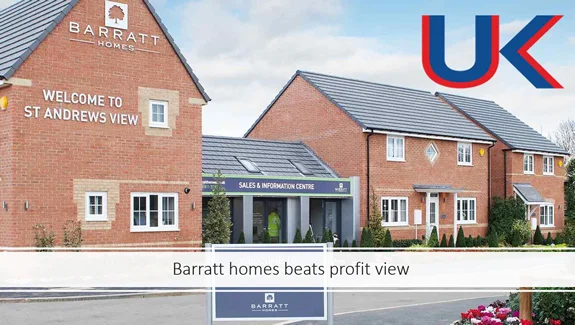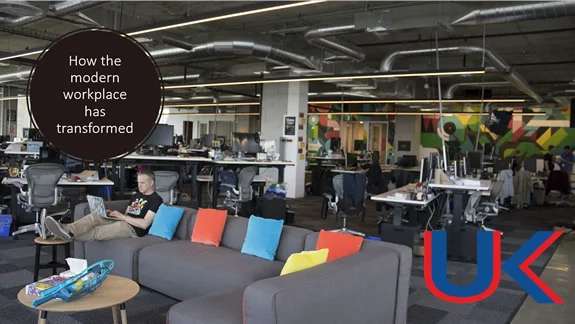News
Buy to Let Investing: Is It Still Lucrative?
There are some who would have you believe that the buy-to-let died a premature death a couple of years ago. Indeed, 2016 brought about a significant slowdown in the buy-to-let market in the UK, following approximately two decades of growth. Nevertheless, this doesn’t necessarily mean that the market as a whole has run out of steam.
Even with the introduction of a stifling bureaucracy for landlords and a 3% additional stamp duty charge, there’s still money to be made. Whether the buy-to-let market is lucrative or not comes entirely down to the decisions made by the investor. Not to mention when and where they make their decisions, along with how they fund their property purchases.
The past few years have brought about a notable reduction in the number of ‘casual’ buy-to-let landlords. That being, those who own just one or two additional properties and, in significant volumes, have cashed in on their investments and taken their money elsewhere. It’s clear that the buy-to-let sector in the UK is becoming increasingly professionalised, but this doesn’t mean it can’t hold enormous potential for those who are willing to commit.
For one thing, analysts point out that as casual buy-to-let owners depart the sector and investors in general remain cautious, there is significantly less competition among would-be buyers than there was previously. This in itself represents a potential benefit for those considering getting into buy-to-let operations. Not only this but even at a time when capital growth isn’t nearly what it was over the past 20 years, the income that can be generated by investing in the property market still has the potential to outperform many other classes of assets.
Roughly translated, the buy-to-let boom may have come and gone, but this doesn’t mean the end of lucrative buy-to-let investment opportunities in the United Kingdom.
A question of locality
As has always been the case, it primarily comes down to location. It’s just that as things become somewhat trickier and more restrictive, investors need to select properties and locations more carefully than ever before. For example, a recent rental tracker published by Your Move indicated strong rent yields of approximately 5% in the Northeast and just under 5% in the Northwest, significantly ahead of inflation at 1.8%. By contrast, 10-year UK government bonds pay an income of 1.3%.
The government’s decision to raise second home stamp duty was motivated by the desire to free up inventory for movers and first-time buyers. an initiative that apparently worked, resulting in more supply becoming available. Nevertheless, demand for quality rental properties across the United Kingdom remains elevated and continues to accelerate. It’s estimated that approximately 19% of households (approximately 4.6 million) rent their properties from private landlords. Many younger demographics prefer the flexibility of renting over the responsibility of buying, while others simply do not have the luxury of choice.
Access to finance
Potentially lucrative buy-to-let investments continue to exist across the United Kingdom. One of the barriers typically standing between would-be investors and buy-to-let property ownership is access to finance. The vast majority of major lenders have tightened their roles and lending criteria significantly over recent years, disqualifying many who would previously have been considered eligible. Even when applicants have the means to qualify, they may not be able to come up with the sizeable up-front deposits needed to secure the loan.
This is one of the reasons why buy-to-let investors are increasingly turning to bridging loans or alternative funding solutions. Specialist lenders across the UK are compensating for the strictness of the High Street with an increasingly flexible and accessible portfolio of secured lending products.
It can be a tricky balancing act to pull off, but the right buy-to-let property in the right location at the right price funded in the right way can still add up to a lucrative investment.
London No Longer the Fastest UK City to Sell a Home
You’d be forgiven for assuming London would be the fastest city in the UK to find a buyer for your property. Until relatively recently, you’d have also been right on the money.
Five years ago, the average time needed to secure a buyer for property in London was just 36 days. According to Rightmove, average selling times had almost doubled by 2018, reaching approximately 60 days.
Interestingly, average property selling times in Scotland plummeted during the same period, from 66 days to just 41 days. This would suggest that sellers in Scotland are currently finding it much quicker and easier to shift their properties than equivalent sellers in the capital.
Beyond Brexit uncertainty
Various key areas of London’s property market have demonstrated signs of a rapid slowdown over recent years. The south-east of England in general has been struggling with a somewhat stagnant property market, though the most dramatic price plummets in the region have been in and around London.
In the meantime, general property prices across the rest of the UK are still on the rise.
A recent study carried out by Rightmove suggests that average property selling times in London are back where they were almost 10 years ago, in 2011. This would seem to suggest that demand is dwindling in London, which has been attributed to both Brexit and other pressing issues.
“While it would be easy to link that with the Brexit vote, there are other factors at play, especially increasingly stretched buyer affordability,” commented Rightmove’s housing market analyst, Miles Shipside.
One of the key factors affecting property sales in London is the growing reluctance among buy-to-let investors, who are discouraged from purchasing investment properties due to changes in taxation. In addition, more first-time buyers than ever before are turning to parents and grandparents to help them buy houses rather than flats.
Real estate experts have also cited Scotland’s more transparent fee structure for home buyers and sellers as a key driver of prompt property sales across the country. Hidden costs, in particular, are much less of an issue for Scottish buyers.
Advice for UK sellers
Across the board, experts are advising prospective property sellers in the UK to be both proactive and realistic, given current market conditions. It’s important to remember that, where older flats in particular are concerned, sellers face the prospect of competing with new-build developments, often with gyms, restaurants, shops, and other facilities right on their doorstep.
Rather than simply considering the value of the property as a standalone asset, it’s important to be realistic about its locality. Even if the interior of the property is pristine, it may not be an attractive prospect for first-time buyers who prioritise convenience and accessibility.
All the usual rules and guidelines continue to apply. Examples of this are to depersonalise and de-clutter your home as much as possible prior to inviting anyone over for an inspection. It needs to be presented as something of a blank canvas, allowing the prospective buyer to visualise how they would decorate the place themselves.
In addition, real estate experts are also warning sellers and buyers alike to expect a long and drawn-out process. Whereas the average conveyancing time (when buying a flat) in England and Wales was around 100 days in 2011, the figure for 2018 came out at 123 days. Hence, agreeing on a sale in the late summer could mean failing to fully close the deal before Christmas.
The patience of sellers is therefore likely to be tested in more ways than one, particularly those attempting to sell properties in and around London.
Housing Crisis: Spare a Thought for the Youngest In Society
The housing crisis in the United Kingdom means different things to different people. For some, skyrocketing property prices are playing directly into their hands and, indeed, their pockets. For others, it’s a case of accepting the stark reality that homeownership is unlikely at best.
Research suggests that approximately 90% of young people in Britain intend to own their own home at some point. Unfortunately, research from Santander suggests that only one in four young Britons (26%) will be on the property ladder by 2026.
This contrasts starkly with figures from 2006, at which time approximately half of young Britons (under the age of 34) owned their own home.
Of course, none of this will come as a real surprise to younger generations in the United Kingdom. The combination of astronomic property prices and stagnant wages has made the dream of homeownership an unlikely reality for most. Precisely why more than 70% of millennials believe that their chances of owning their own home are slim to none.
An escalating issue
With the state of the UK housing market as it is, fewer would-be first-time buyers than ever before are making concerted efforts to get on the property ladder. Research suggests that only 42% have anything put away to cover the deposit on a prospective property. Interestingly, of those who had earmarked savings for a deposit, men were found to have saved twice as much as women.
While the men polled who had deposit savings put away had an average of £11,600, the women polled had saved an average of £5,620. Across both gender groups, the average target amount for those saving towards a property purchase was £24,000.
Had they managed to hit this target, which the vast majority didn’t, they would still have fallen short of the required funds to buy a home. Today, taking out a mortgage on an average property in the United Kingdom means coming up with a deposit of £44,000. For most everyday earners, this is simply out of the question.
In 1996, approximately 65% of people on low to medium incomes (between £20,000 and £30,000) owned a home. By 2016, this had fallen to just 27%.
Today, it’s estimated that around 65% of homebuyers have incomes of more than £40,000—significantly higher than the national average. Salaries have been rising on average by a mere 18% over the past decade, failing to maintain pace with average house prices, which are all around 47% for the same period.
Speaking on behalf of Santander Mortgages, managing director Miguel Sard acknowledged the difficulty facing an entire generation of first-time buyers.
“It’s clear that while the aspiration to own a home is just as strong as in previous generations, it’s a dream that is looking increasingly out of reach,” he said.
“Without change, homeownership in the UK is at risk of becoming the preserve of only the wealthiest young buyers over the next decade. This report should be a wake-up call for industry and the government to think more creatively to keep the homeownership dream alive for the next generation of first-time buyers.”
With conventional purchase channels all but closed, more first-time buyers than ever before are turning to friends and family for help. In fact, the study from Santander suggests that almost 40% of all first-time buyers now rely on support from parents and grandparents to purchase their homes.
In the meantime, the number of British people taking on second homes as buy-to-let properties is reaching an all-time high, having doubled since 2001. As wealthier Brits continue to capitalise on sky-high property prices and accelerating rental yields, an entire generation risks being priced out of the market. All attempts by the government to address the issue (Help to Buy, lifetime ISAs, etc.) have so far been criticised as inadequate or simply not fit for purpose. Unless more drastic action is taken, the issue is only predicted to continue worsening over the years and decades to come.
Barratt Expects Annual Profit To Beat Market Forecasts
Despite the rather gloomy outlook from some industry watchers a short time ago, housebuilder Barratt Developments PLC is now expected to beat initial market forecasts. Having completed a record number of new home builds and significantly improved its margins, the organisation’s annual profit is set to comfortably beat expectations.
Barratt has published a new trading update for the year running up to June 30, in which it revealed that a record 17,856 homes have been constructed during this year. That’s up slightly from 17,579 last year, including an impressive 17,111 wholly-owned completions. This represented a 2.6% increase year-on-year, with joint venture completions down 17.1% to 745 homes.
Supported by the decision to purchase sites with higher margins, the company’s operating margin increased to 18.9% this year from a prior 17.7%. Barratt’s performance has also been bolstered by the reversal of inventory impairment provisions and the disposal of legacy commercial assets.
In a pre-Brexit era of uncertainty where the British housing market is all over the place, Barratt continues to perform above and beyond most realistic expectations.
Declining average home prices
Completions may have hit a new record high, but the average selling price for a new property for the year ending June 30 came out at £274,000, which is a sizeable decline from the previous average of £288,900. According to Barratt, this is the result of a change in the mix of completions.
For example, private home completions grew 0.7% to 13,533, while affordable home completions increased 10.4% to 3,578. In the affordable homes bracket, average prices increased from £123,700 to £131,000, but the average selling price of a private home fell from £328,000 to £312,000.
On the whole, the company stated that its joint ventures have delivered a higher overall profit than expected of £35 million, which is a significant improvement on last year’s £18.6 million. This was due largely to sizeable gains in land sales.
Total profits are better than expected
In terms of total pre-tax profits, Barratt now expects to comfortably exceed the estimates of analysts. The company now expects a total profit of £910 million, up from 2018’s £835 million.
Like many major housing companies, Barratt has responded to the Central London housing market slowdown by focusing more heavily on developments further afield. The company now has 18 private properties scheduled for completion within its Central London portfolio, a far cry from last year’s 145.
Going forward, Barratt intends to continue focusing on margin improvements.
“While there remains some economic and political uncertainty, the group is in a strong position,” Barratt said.
“We have a substantial net cash balance, a well-capitalised balance sheet, a healthy forward sales position, a continued focus on the delivery of operational improvements across our business, and an ongoing commitment to deliver the highest quality homes across the country.”
“We believe that this gives us the resilience and flexibility to react to potential changes in the operating environment in fiscal year 2020 and beyond.”
Despite its declaration of better-than-expected profits for 2019, the positive news didn’t have any real impact on Barratt’s share prices. Shares traded at 576.2p during morning trading, which was no real difference from the day before.
Nevertheless, experts at Peel Hunt spoke with great optimism regarding Barratt’s current performance and future outlook, increasing its target price to 630p.
“The group’s margin story has been a key differentiator over the last 6–12 months, especially as others have been hit by quality and leasehold concerns,” the broker said.
“While a chunk of the value gap has now been closed, Barratt remains a well-run business.”
What are ‘Green Mortgages’?
In an age where everything is slowly but surely going green, the existence of the ‘green’ mortgage comes as no real surprise. However, comparatively few current and prospective homeowners are familiar with what the term refers to.
Below, you’ll find five helpful answers to some of the most important questions on the subject of green mortgages:
What is a green mortgage?
In the simplest terms, green mortgages are financial products from banks and lenders that enable buyers and lenders to access preferential rates by demonstrating that the property they intend to purchase is environmentally friendly. or, at least, complies with certain specified environmental standards. It could be that the home already has an outstanding sustainability rating or that the borrower intends to invest heavily in the property’s environmental performance. In both instances, the borrower may be considered eligible for a green mortgage.
Essentially, green mortgages target environmentally friendly buildings and encourage buyers to invest in green properties. If the property is deemed suitable, the lender may choose to provide a mortgage with a lower rate of interest or with some kind of discount on the usual overall cost of the loan. The concept of the green mortgage was only introduced relatively recently, though it has already attracted the attention of some of the biggest banks and lenders in the United Kingdom.
Who defines ‘green’ and why are the banks interested?
It’s technically up to each individual lender to determine the extent to which they consider any property ‘green’ or otherwise. Lenders outline their own criteria and environmental standards the property must comply with in order for the borrower to access any subsequent incentives accordingly.
For the borrower, it all adds up to potentially significant savings on their long-term mortgage obligations. As for what’s in it for the lender, it all comes down to reducing risk. Lower-risk loans almost always have lower interest rates and borrowing costs, with green mortgages being considered safer than conventional mortgages. Work out the costs of a mortgage using our mortgage calculator in the UK.
This is partly due to the fact that environmentally friendly buildings usually cost less to run and maintain. In turn, the mortgage buyer has reduced outgoings and more money available to keep on top of their mortgage payments. In addition, the market value of any environmentally friendly property is typically significantly higher than that of a comparable property with a lower eco-rating. Statistically, it is likely that those who invest in green properties will own homes of higher value at the end of the loan term.
Many lenders see both of the above as added insurance policies for the green loans they provide, which is why they are willing to offer them at a lower overall cost.
Will green mortgages really make a difference?
For the time being, the whole green mortgage is still in its infancy. Nevertheless, it is expected that the new approach and policy conducted by banks across Europe will indeed make a difference. It’s estimated that the overwhelming majority of buildings we will be using in the year 2050 are already built. A figure that underpins the importance of both constructing new energy-efficient buildings and improving the eco-friendliness of existing buildings To date, around 20 of the biggest banks in the European Union have demonstrated an active interest in the new green mortgage initiative. The idea is that the scheme encourages parties on both sides of the deal to favour eco-friendly homes. The potential for the project is huge, though it is not expected to hit its stride for another couple of years at least.
How The Modern Workplace Has Transformed Itself
It’s easy to take the various conveniences and freedoms of the modern workplace for granted. Particularly if you’ve only recently joined the workforce, it can be hard to imagine the workplace of yesteryear.
But what have been the biggest changes to the modern workplace over the past 20 years or so? Prior to the turn of the new millennium, what kinds of conveniences we now take for granted were predominantly out of the equation?
Working remotely
For one thing, remote working, aka the virtual workplace, was practically unheard of just a few decades ago. Today, it’s estimated that around 30% of the entire work force has worked remotely at some point or another. Modern technology has transformed every device with a working Internet connection into a fully functional office suite.
Frequent job changes
The vast majority of employees are always on the lookout for a bigger and better deal. In times gone by, it was the norm for people to stay with the same company for 30 or 40 years before leaving with a gold-plated watch and a decent pension. These days, it’s the norm for people to stick with the company for no more than five years before searching for greener pastures.
Equality and diversity
Particularly in the United Kingdom and the United States, there’s been a gradual yet radical adoption of workplace equality and diversity policies. Rather than simply encouraging workplace diversity, official government policy has made it a legal requirement to champion diversity and equal opportunities. Discrimination in any form is no longer tolerated and is considered abhorrent.
Flexible dress codes
Some of the world’s biggest and most successful companies have acknowledged the fact that you don’t necessarily have to dress in a stiff power suit to do a good job. Enormous enterprises like Google encourage their workforce to express their personalities and individuality, wearing pretty much anything they want to wear to work. Piercings, tattoos, and gravity-defying hairstyles are all part and parcel of the modern office experience.
Employee input
It may be hard to believe that there was once a time when the prospect of any lower-level member of the workforce communicating directly with ‘the boss’ would have been out of the question. particularly if said employee wanted to make a rather outlandish suggestion or bring up a grievance of some kind. Today, employees at all levels are actively encouraged to share their thoughts and opinions with their superiors. Communication in general in the average workplace has transformed beyond recognition over recent years.
Transparency
No longer can an organisation expect to get away with operating in a shroud of secrecy. Company policies, salaries, benefits, promotion opportunities, and organisational performance—extensive efforts are made to keep all employees in the loop. The idea is that by ensuring everyone is on the same page, everyone takes equal pride in their work and performs better accordingly.
Availability
Even as recently as the mid-1990s, it was comparatively rare for anyone other than an executive to carry a mobile phone. Today, it’s almost unheard of for anyone not to carry a mobile phone. The result of this is the near-constant availability of workers at all levels on a 24/7 basis. The ability to contact any person from any place in the world at any time has radically transformed the way the world does business.
General workplace culture
Last but not least, the culture of the modern workplace embraces motivation, satisfaction, and enjoyment at an unprecedented level. Businesses worldwide are acknowledging the fact that when employees are happy to come to work, they perform better. Flexible working hours, a relaxed working environment, stocked kitchens, pool tables, coffee machines, and so on—all have an enormous impact on employee motivation and retention. It’s taken some time, but it’s now acknowledged that the most effective way to motivate workers is to create an enjoyable working environment, not simply force them to do the job.
Interest Only Mortgage: What Are My Options?
Interest-only mortgages were once popular among home buyers across the UK. Today, a growing number of major banks and lenders are rapidly phasing interest-only mortgages out of the picture. primarily due to a growing lack of interest among borrowers.
With an interest-only mortgage, the subsequent monthly repayments cover only the interest on the loan but not the capital. The advantage is that the average monthly repayments on an interest-only mortgage can be extremely low. However, you’re still liable to pay back the full amount you owe on your home at the end of the term in one lump sum.
For obvious reasons, this can result in issues for those who simply do not have the funds available to pay off their loans.
More often than not, borrowers taking out interest-only mortgages use savings systems like ISAs to amass the money they need over time. The flexibility of an interest-only mortgage can be great, but there are no guarantees that the borrower will have enough money available at the end of the loan term.
There are currently around 1.6 million outstanding interest-only mortgages in the UK, and repayment difficulties are surprisingly common. Work out the costs of a mortgage using our UK mortgage calculator.
Handling repayment difficulties
If you simply do not have enough money saved to pay off your mortgage at the end of the term, it’s important that you consider your available options at the earliest possible stage. The earlier you take action, the easier it becomes to avoid an outright disaster.
There are four basic options available in such circumstances, as outlined below:
Take out a new interest-only deal
If you are deemed eligible, you may be able to enter into a new interest-only mortgage. This will depend on the value of your property, your current financial position, and your age. It can be a challenging and potentially costly process, but it could also prevent your home from being repossessed. Speak to your lender or independent broker at the earliest possible stage.
Switch to a repayment deal
Again, depending on your personal circumstances and the value of your property, it may be possible to switch to a more conventional mortgage deal. Rather than paying off the money you owe in one lump sum, your lender may be willing to organise a more gradual repayment deal. This is one of the most popular options among struggling borrowers, as it provides the opportunity to maintain ownership of their property and repay their debts over several years. Interest rates and additional borrowing costs will apply.
Sell your home
Another viable option is to sell your home, repay the money you owe, and hold on to the rest of the proceeds yourself. This can be particularly useful if the value of your home now significantly exceeds its original purchase price. However, there’s every possibility that the value of your home will not cover the amount you owe. Again, it’s important to seek expert advice at the earliest possible stage if considering this option.
Take out an equity release plan
Last but not least, equity release plans provide homeowners with the opportunity to tap into the capital tied up in their homes. You release some or all of the value tied to your home, repay your interest-only mortgage debt, and make subsequent ‘rent’ payments to the new lender. Depending on the value of your home and how much of it you own at the time, you may be able to repay your interest-only mortgage and continue to live in the property rent-free. As equity release is by no means suitable for all homeowners, it’s important to seek independent financial advice before making your final decision.
Divorce doesn’t have to end in tears with UK Property Finance
When a relationship ceases, it can be a terrible situation for all parties, both emotionally and financially. An amicable discussion about splitting assets can often bring its own complications; however, thousands every year unfortunately experience this, and January is statistically the highest month of the year for divorces and separations. Ironically, the highest number of inquiries for rental properties each year occurs on Boxing Day, which indicates some forward planning takes place.
Our client approached UK Property Finance for advice on purchasing a new property following the deterioration of her long-standing marriage. This sensitive situation is sadly one that we have seen before, and the team at UK Property Finance is well-trained in handling it.
Having found a modern 2-bedroom house within the locality of the current family residence, our client was quick to submit an offer to avoid disappointment. Starting again at this stage of life required family assistance, and our client’s parents agreed to provide a sizeable deposit to enable the purchasing process to begin. The task of finding the remaining funds was handed to UK Property Finance.
The divorce proceeding had begun and was anticipated to be lengthy and not in line with our client’s required timeframe. Fortunately, our client’s ex-husband had agreed to an amicable settlement in relation to the ex-family home and was allowing our client a larger share of the equity from the sale in return for a reduction in his monthly maintenance payments. The current property was valued by three estate agents, and after choosing the most trusted, the property was marketed for sale.
The chosen lender used the new purchase property and the ex-marital home as security for the loan. Using both properties allowed our client access to the lowest interest rates in the market. The exit vehicle being used to repay the loan was to be the sale of the ex-marital home, and the lender required a legally binding court order as proof of our client’s equity share in the sale. This enabled the loan to be taken solely in our client’s name, which satisfied the requirements of our client’s ex-partner. The court letter took 2 weeks to obtain; however, UK Property Finance used this time to achieve an offer for our client, subject to receipt of the required documentation.
The lender offered the best rate available as well as a £99 valuation fee, as both security properties were of standard construction. Overall, the process took 3 weeks to complete from initial conception and was a successful outcome for all involved, and UK Property Finance were able to negotiate a bridging loan that was flexible and tailored to the client’s needs.








